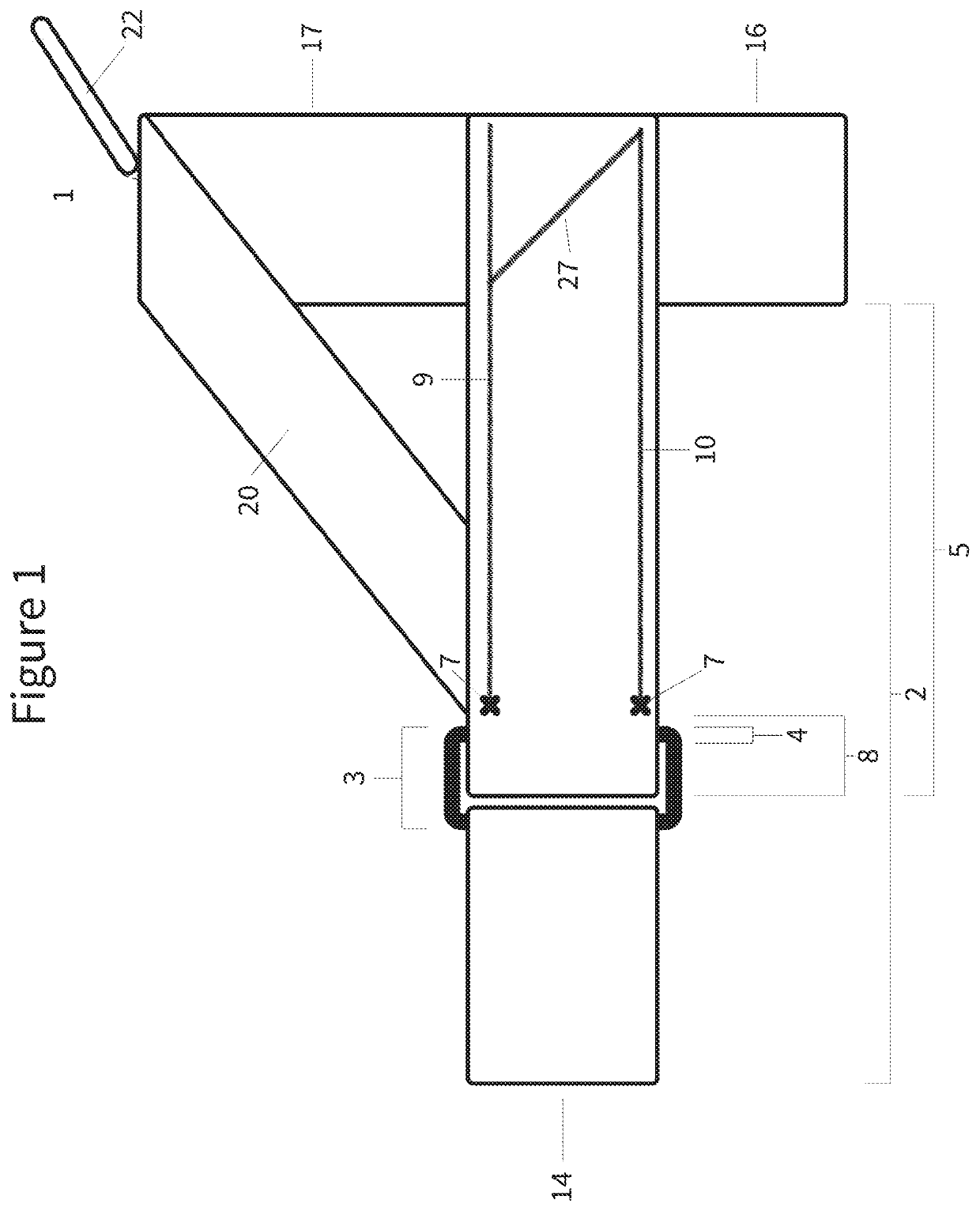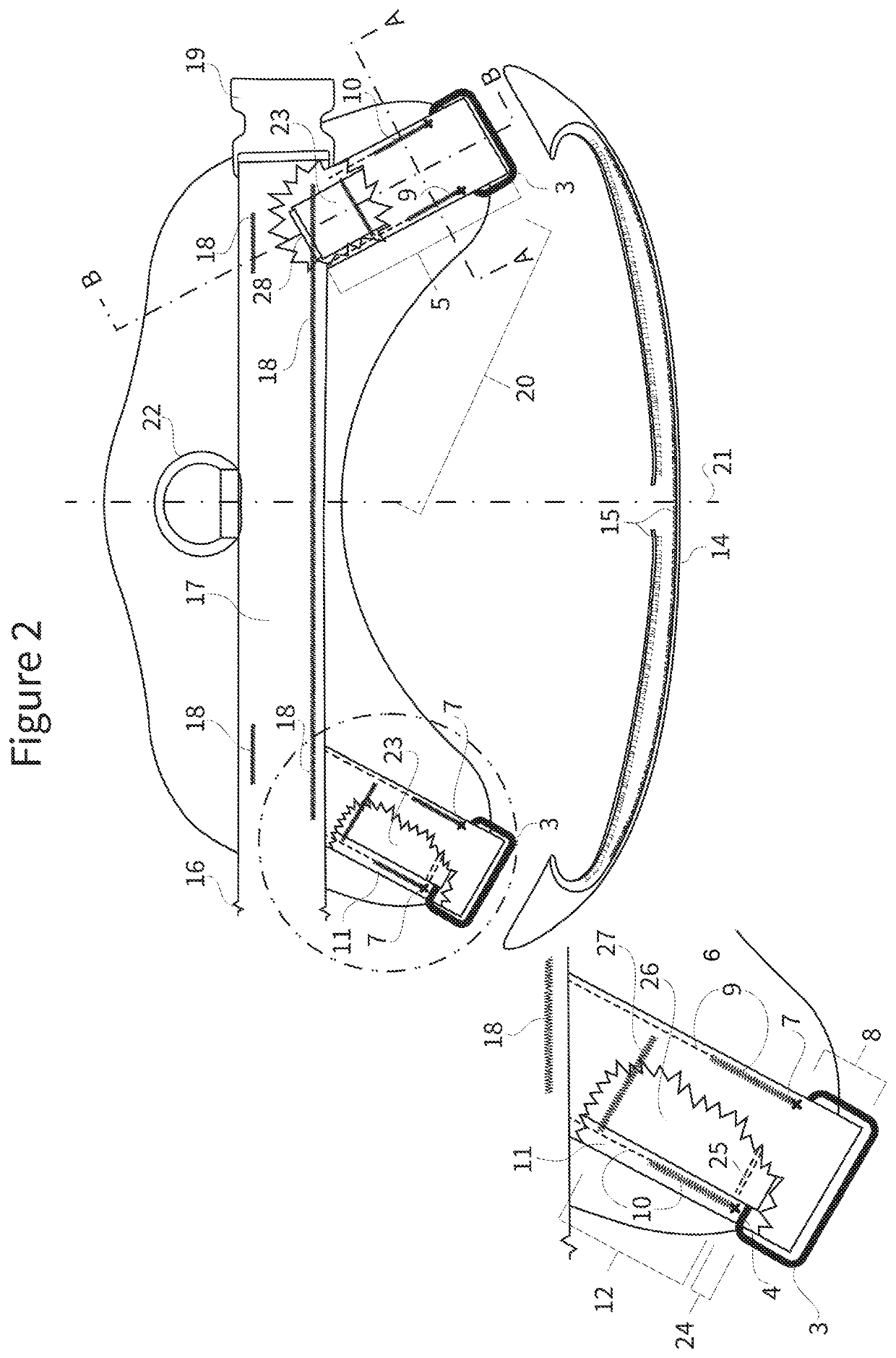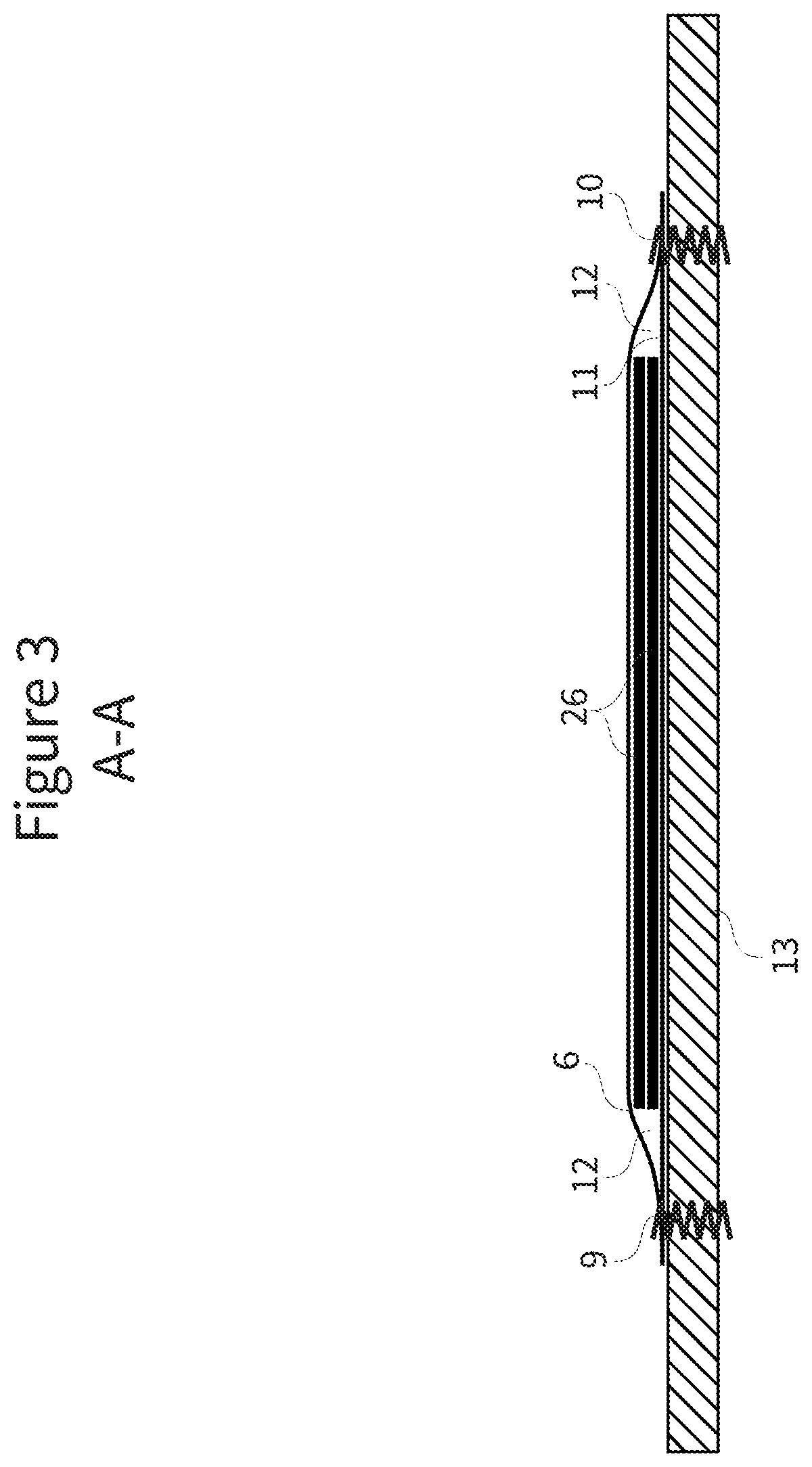When the dog is lead on a leash, the steps, the movement of the shoulders of the dog, and the periodic movement of the person holding the leash result in micro-tuggings, which put a load on the joints and can make the healing of injuries difficult.
During the movement of the human and the dog, as a result of the steps and the swinging of the arm, a continuous periodic-dynamic excitation occurs, the load causes a so-called tugging force which can have an
adverse effect on the joints, depending on its strength.
In addition, the tugging force acts unexpectedly, shockingly, catching both the human and the dog unprepared.
Research and development can result in unexpected effects in terms of the location, length and fixing of the elastic elements.
In the prior art, there has been no research into the forces acting during the street use of dog harnesses, and into the reduction of the peak forces.
In the case of pulling chest harnesses, it was not desirable to reduce the forces acting on the shoulder joints.
Such a shock-like load is not sufficiently reduced by the padding materials, or padded straps.
In the event of a sudden load in the direction of movement, the chest of the dog is supported by the whole width of the surface of the chest pad, but its stretching is practically minimal, so its load absorbing capacity is low.
However, this pressure distribution device has the
disadvantage that it affects only to a minimum extent the distribution of the load on the chest part and the shoulder joints.
The device is not suitable for dampening the micro-tuggings generated when leading the dog on a leash.
However, the limitation of stretching is not implemented in that development.
The elastic portion of the pressure distribution device is in direct contact with the body of the dog, and can put an undesirable load on the fur of the dog, if the
instructions for use are not followed exactly by the user.
The biggest
disadvantage of the development is that the elastic elements are not covered, and their stretching is not limited.
The developments listed above are not suitable for the long-term, elastic compensation of the forces acting when leading the dog on a leash.
All prior art developments also have the
disadvantage that the elastic elements are not covered or wrapped.
Thereby, the elastic elements are directly exposed to environmental effects, and primarily the harmful UV rays of the sun.
Furthermore, in the event of repeated tuggings, the elastic portions are not relieved by a limiting element.
The elastic elements are also load-bearing elements, whereby they
wear out more frequently.
The limitation of stretching increases the service life of the elastic portion.
A disadvantage of this development is that the elastic portion is looped around the
fastener / adjuster ring or frame loosely, and it is not tightened on the ring or frame to prevent it from turning out.
Furthermore, its interior lacks angular connections as it is curved, which has the disadvantage of making it possible for the straps threaded through it to get wrinkled.
The
fastener / adjuster ring can turn out as a result of the loads, and this cannot be prevented by the element limiting the stretching of the elastic portion, forming a loose loop, as it is not holding the
fastener / adjuster ring tightly.
This can lead to the fastener / adjuster ring or frame holding the chest strap turning with its narrower side into the horizontal direction under load and wrinkling the chest strap as a result of prolonged or intensive use.
The element limiting the stretching of the elastic portion is a loose loop, which is disadvantageous because it allows the displacement or turning out of the ring.
Therefore, its design according to this prior art development is haphazard.
A further disadvantage is that the sewing used in this development fixes both the elastic portion and the element limiting the stretching of the elastic portion, which makes it impossible to design the length of the elastic portion, or at least to increase its length to any substantial extent.
The chest harness with an elastic chest strap does not provide a solution for a significant extension of the stretching part of the elastic portion.
A serious disadvantage is that the elastic portion is connected to the chest strap part holding a fastener / adjuster ring adjacent to the fastener / adjuster ring.
It is not possible to have a primarily stretching elastic portion stretching over a long section, and a channel portion for protecting it.
The fastener / adjuster ring, through which the elastic portion is threaded, due to its design, is incapable of holding the elastic portion vertically.
Therefore, the short elastic portion threaded through the fastener / adjuster ring, moving in the fastener / adjuster ring, receives load from friction as well, which does not allow prolonged use, foreshadowing the premature wearing out of the elastic portion.
The prior art development discussed above does not provide for a narrower elastic portion compared to the element limiting the stretching of the elastic portion.
The elastic portion disclosed in the prior art development, having the same width as the element limiting the stretching of the elastic portion, is at least partially exposed to the harmful UV-rays of the sun, causing the
premature aging of the rubber or other elastic material.
Furthermore, the elastic portion of the prior art development can come into direct contact with landmarks during use, which can damage the surface of the elastic portion.
Therefore, the individual components of the chest strap can disadvantageously get displaced, wrinkled, and can slide down to the front legs of the dog, leading to injury or the dog getting loose.
In the prior art, the use of elastic elements in dog harnesses lacks any calculation-based design with respect to wearing out, overloading, or elastic elements of widths and strengths varying as a function of the size of the dog harness.
In general, it can be stated that the prior art does not teach or suggest a dog harness in which the elastic design, the movement of the dog harness as a whole, or elements thereof, does not have an undesirable physical effect perceptible to the dog when led on a leash.
 Login to View More
Login to View More  Login to View More
Login to View More 


